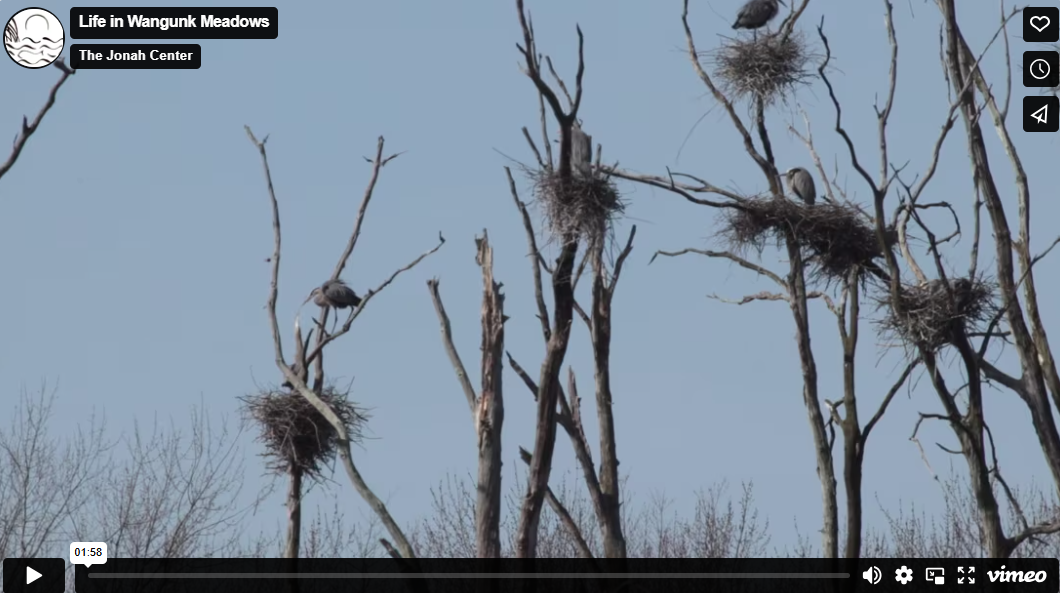 Our final Paddle With A Purpose for the season was on August 2. Volunteers and field workers removed 2000 pounds of invasive water chestnut plants. That makes our total for the year come to 18,500 pounds. (We removed 24,000 pounds last year. So, we’ve made progress in reducing this infestation.) Continue reading
Our final Paddle With A Purpose for the season was on August 2. Volunteers and field workers removed 2000 pounds of invasive water chestnut plants. That makes our total for the year come to 18,500 pounds. (We removed 24,000 pounds last year. So, we’ve made progress in reducing this infestation.) Continue reading
Author Archives: John Hall
Socially Conscious Music
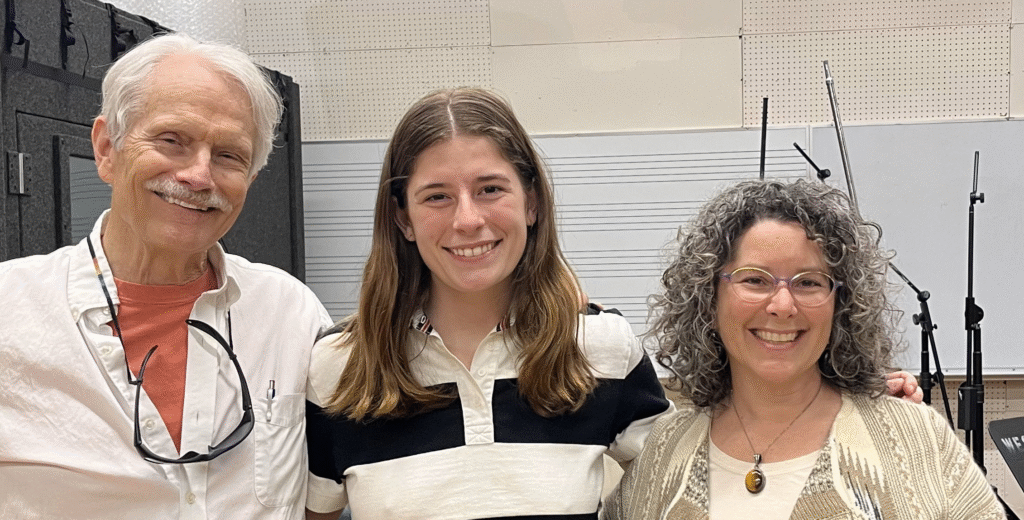
Student composer Emma Mistele (center), with John Hall (left) and Kristen Colombo (right) at the presentation of music written for Noah Baerman’s class at Wesleyan.
Some of the Wesleyan students in Noah Baerman’s course “Experiments in Public Life: Creating and Presenting Socially Conscious Music” met with the Jonah Center, Community Health Center, Gilead Community Services, Oddfellows Playhouse, and Artists for World Peace, to find inspiration for their projects. Our readers can listen to the resulting 5 compositions and 12 others here.
The composition that emerged from the Jonah Center interview, “Vernal Piano” by Emma Mistele, is included in the above album, but its introduction and recording can also be found here
Spring & Summer Paddle Schedule for 2025

Our “Paddle With A Purpose” schedule for 2025 is below. We need volunteer paddlers to help us remove invasive water chestnut plants from local waterways. Scroll down to find the Registration Form. A limited number of loaner kayaks are available from our partner, the Connecticut River Conservancy, for Middletown paddles only. Continue reading
Video — Life In The Wangunk Meadows
This wildlife video by Phil LeMontagne shows the abundance of life in Portland’s Wangunk Meadows that includes a special wetland area known locally as “the Rookery.” Click on the image to watch the video. The animals shown and directions to the site are below. Continue reading
Do You Know A Middle-Schooler Who’s Interested In Art?

Gla Rose, an artist, educator, and Jonah Center Board Member, is leading a 7 week after school art program starting April 23rd at CNTR in Middletown, CT. Art Station will meet Wednesdays from 3:30-5:30pm, and is geared towards 6th-8th graders. The program will focus on open-ended art-making inspired by the work of a variety of lesser known contemporary artists. A range of media will be explored including collage, drawing, painting, sewing, printmaking, and mixed media. Gla will tailor the program to the interests of participating artists, and support artists to reflect, envision, experiment, build technique, and collaborate. Contact gLa.messages@gmail.com to register or find out more. Continue reading
Traffic Cameras Win Council Approval
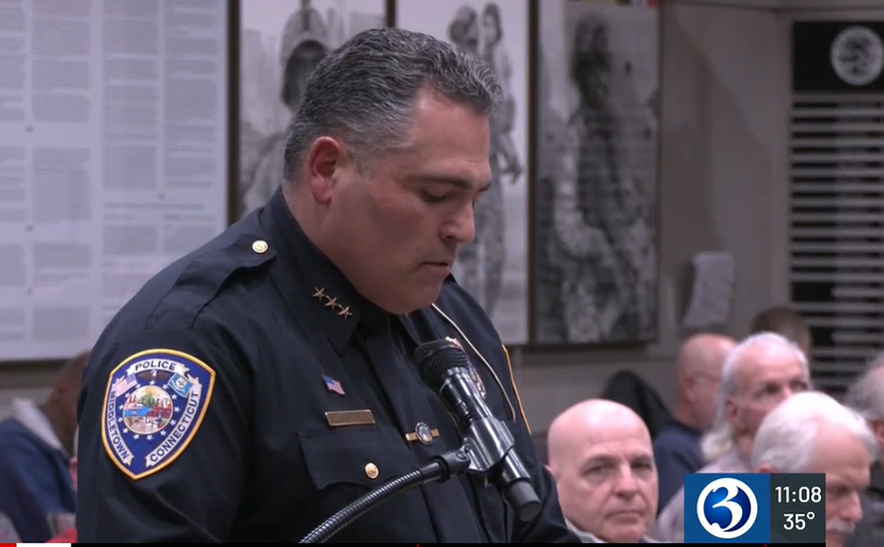
Middletown Chief of Police Eric Costa speaking at the Jan. 27 meeting of the Public Safety Commmission.
After the public showed strong support for Automated Traffic Enforcement Safety Devices at Middletown’s January 27 public information meeting, the Common Council voted unanimously on February 3 to approve the use of traffic cameras. We thank all who signed the Jonah Center petition last February and those who emailed the Common Council to express their support of this step in making our streets safer.
Chief Costa said the department had identified the following 4 locations in the city where ATESDs would make a significant improvement to public safety: Continue reading
Saybrook Road Bike-Ped Improvements Planned
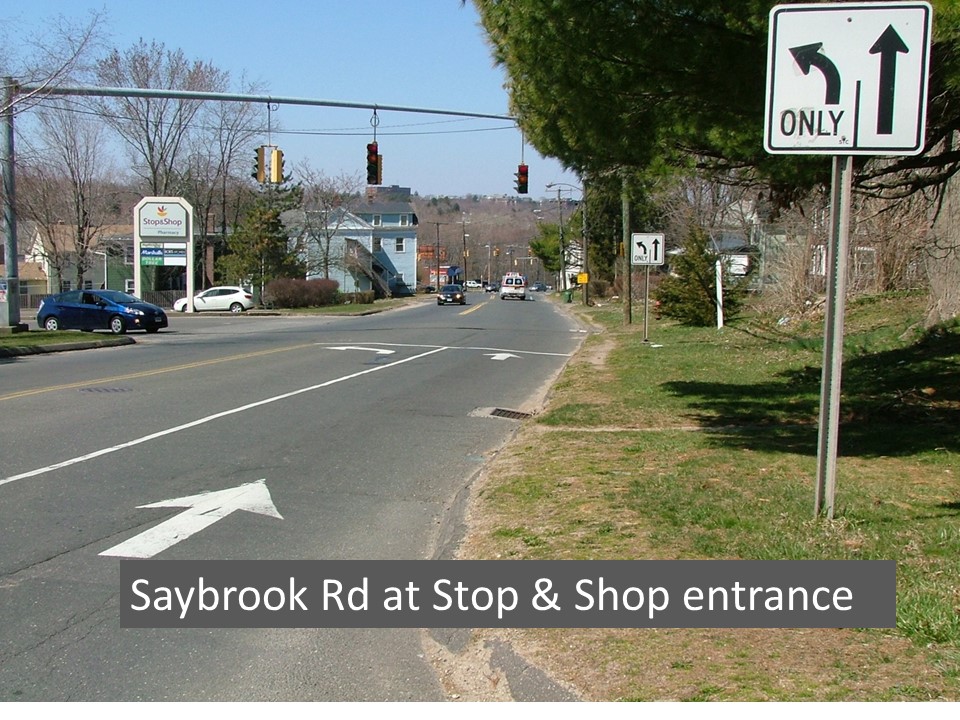
Present (2020) state of roadway. No sidewalk, no crosswalk, no pedestrian crossing signal, no bike lanes.
(NOTE TO READERS: The post below was written in 2020, when we were told that improvements to this area would be made soon. Now, in early 2025, we are again hoping for construction at this site to take place, but the final plans will differ somewhat from the plans illustrated below. The matter is being considered internally by Middletown’s Department of Public Works. A public information session should be held at some point in the coming weeks or months.)
In 2012, the Jonah Center and Middletown’s Complete Streets Committee prioritized for improvements one of the most dangerous areas in Middletown. At least, we expect huge improvements to the area in the coming year. It’s been a long wait, but we are very excited to know that the needed changes will happen soon. Continue reading
The Jonah Center Is 20 Years Old!
The Jonah Center has reached its 20th anniversary! Over these decades, our advocacy has produced the kayak and canoe launch at 181 Johnson Street; a multi-use trail adjacent to the public housing along Long Lane; many sidewalk and crosswalk improvements; increased tree- planting; and creation of Ecoin (Environmental Collective Impact Network), which got pesticides on city land and single-use plastic bags banned, supported natural grass playing fields, and educates residents on state and local legislation and actions affecting the environment.
In November, we sent our Annual Appeal letter to those who supported us in 2024, asking for your support in 2025. If you prefer to give online and save yourself postage, you may do so on our website here.
Thank you, in advance, for your support.
Central CT Loop Trail Public Meeting
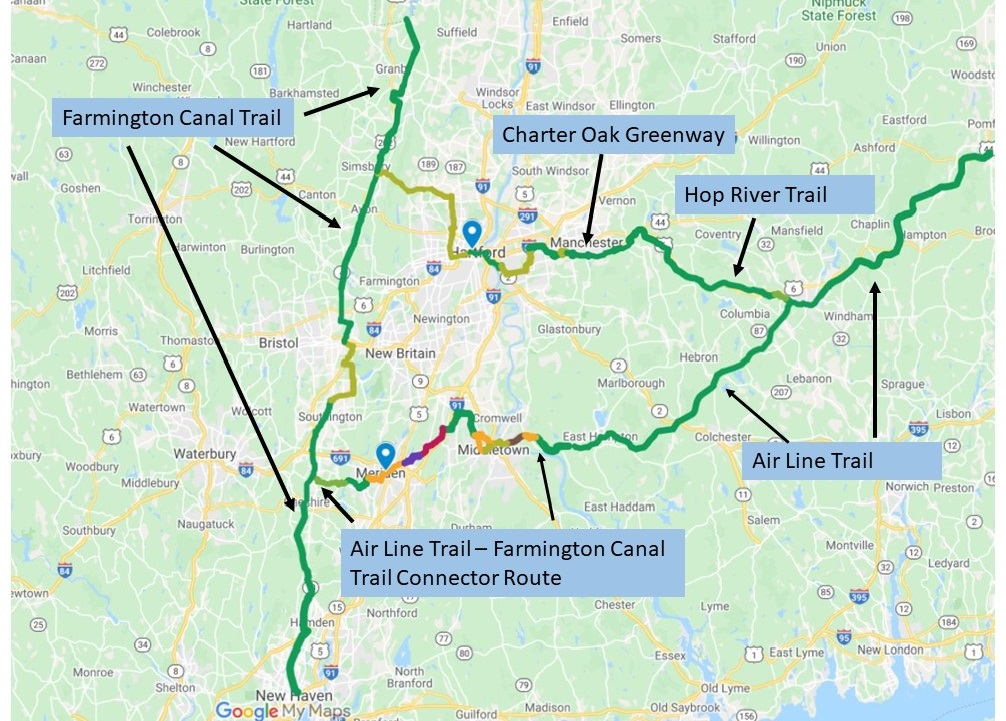 We urge the public to attend a special public meeting to hear the results of the route study for the Central CT Loop Trail segment from Portland to Cheshire, conducted by engineering firm VHB. The event will be held in the Council Chamber of Middletown’s City Hall on Wednesday, November 20, 6:30 – 8:00 p.m., beginning with a formal presentation and followed by questions and comments from the public. Continue reading
We urge the public to attend a special public meeting to hear the results of the route study for the Central CT Loop Trail segment from Portland to Cheshire, conducted by engineering firm VHB. The event will be held in the Council Chamber of Middletown’s City Hall on Wednesday, November 20, 6:30 – 8:00 p.m., beginning with a formal presentation and followed by questions and comments from the public. Continue reading
Sunday Morning Tree Walk – October 6, 10 a.m.
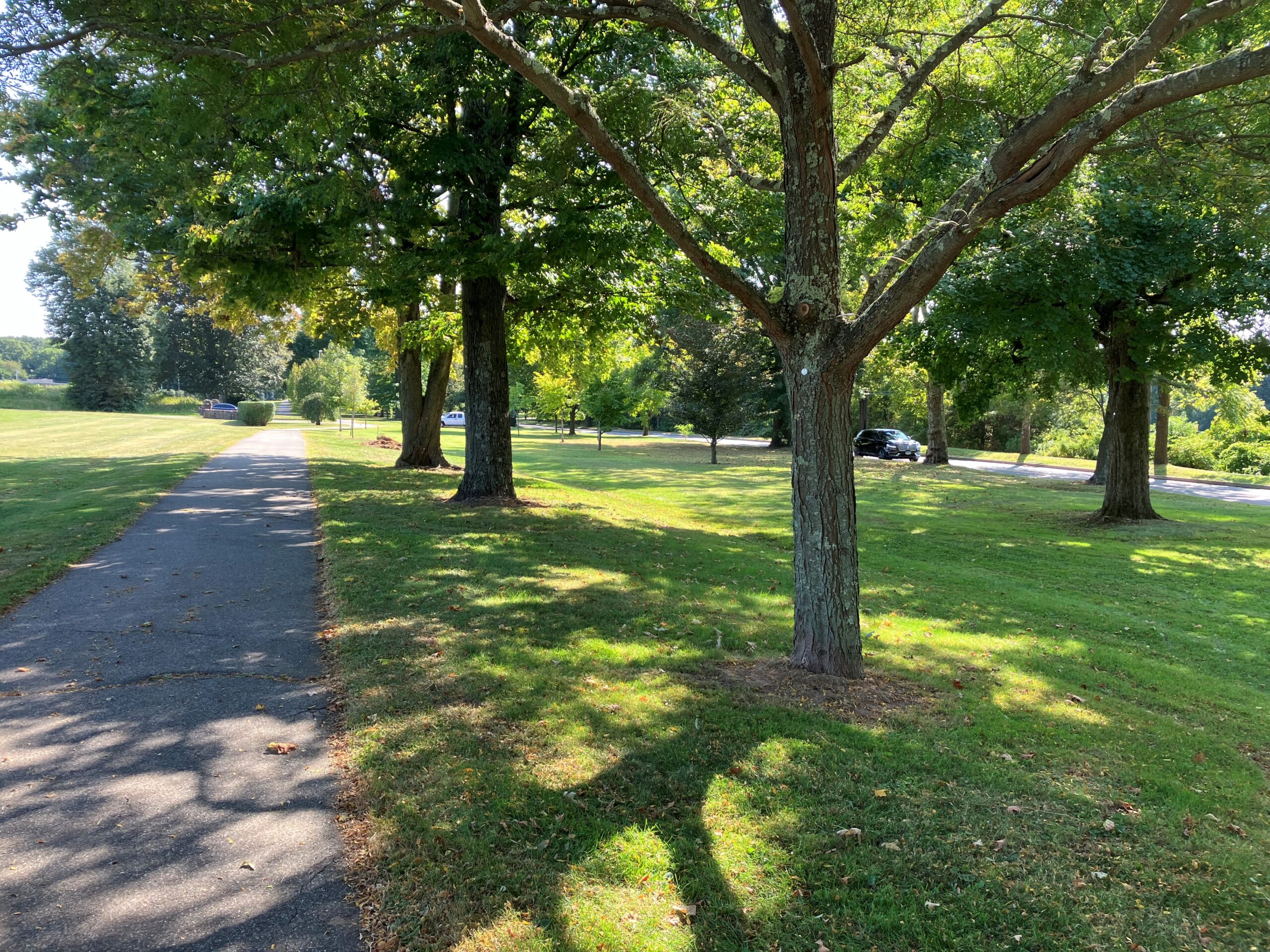
The Wadsworth/Kerste DeBoer Arboretum looking south along the walking path parallel to Long Lane.
Enjoy an easy 45-minute guided tour of the Wadsworth/Kerste DeBoer Arboretum on Long Lane near the Wesleyan campus. Learn how to identify 12 of Middletown’s most common street trees and hear about the arboretum’s history and its 90 different tree varieties. 60% of the arboretum’s 200 trees are native species.
Park in the Long Hill Farm parking lot at 243 Long Lane. The arboretum is on the opposite side of Long Lane at this location.
Trees in the Forest City
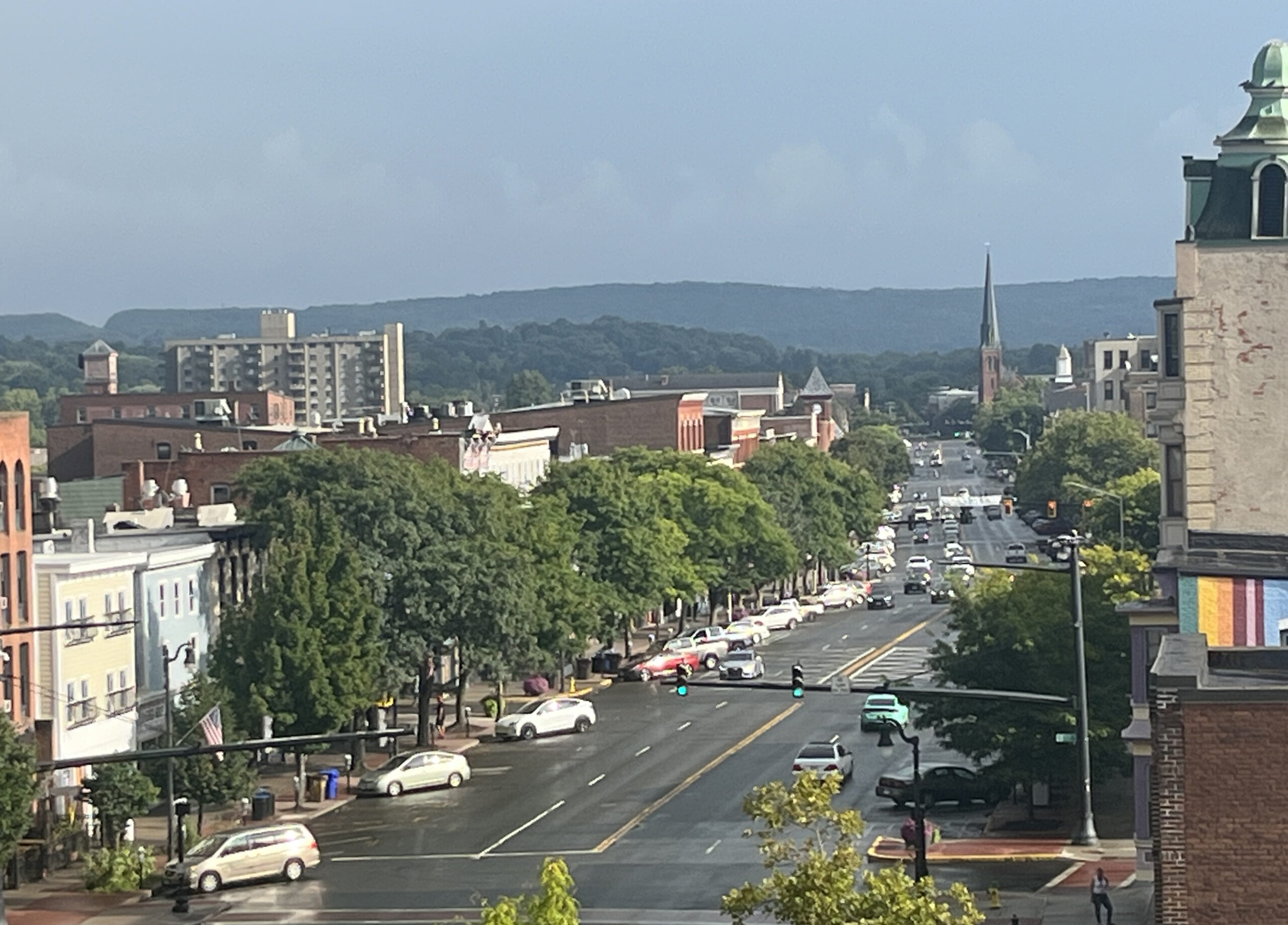
Photo by Chris Donnelly
A Middletown Urban Forestry Program
Russell Library, Hubbard Room
Thursday, September 19, 2024
5-6 pm
Introduction and Overview
Jane Harris, Chair, Middletown Urban Forestry Commission
Tree Grants, including the Street Tree Inventory
Chris Donnelly, Middletown Forester
In 2024, Middletown received a DEEP grant to conduct a tree inventory. Chris will describe ways in which you can be involved.
Tree Walks and the ‘Microforest’ Project
Steve Cronkite, Vice-Chair, Middletown Urban Forestry Commission
Steve will discuss an upcoming tree walk, open to the public, and plans for a ‘Microforest,’ based on the Miyawaki Forest concept.
Further Tree Discussions and a Look-Ahead
The people of Middletown have a great deal of interest in their trees, and trees are a fundamental part of the city’s environment. We all share in the benefits from trees. How can the community’s involvement with the urban forest be increased?
All are invited! Come hear about what is going on with the trees in Middletown. Find out how you can help.

Photo by Chris Donnelly
Why Support Speed and Red-Light Cameras?
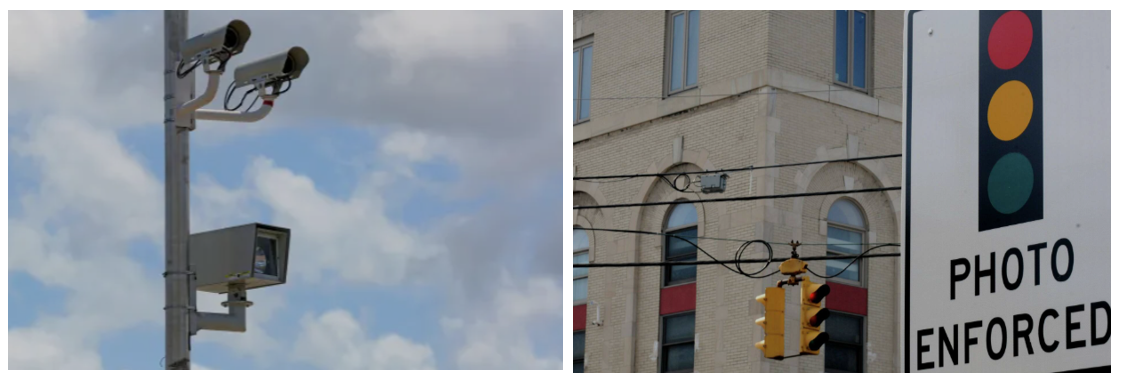 During the pandemic, motor vehicle crashes increased in frequency, and they have not declined to pre-pandemic levels. Factors leading to more crashes are speeding, driving while intoxicated, and driving (or walking) while “distracted” (using one’s phone, texting, checking social media, etc.). Continue reading
During the pandemic, motor vehicle crashes increased in frequency, and they have not declined to pre-pandemic levels. Factors leading to more crashes are speeding, driving while intoxicated, and driving (or walking) while “distracted” (using one’s phone, texting, checking social media, etc.). Continue reading














